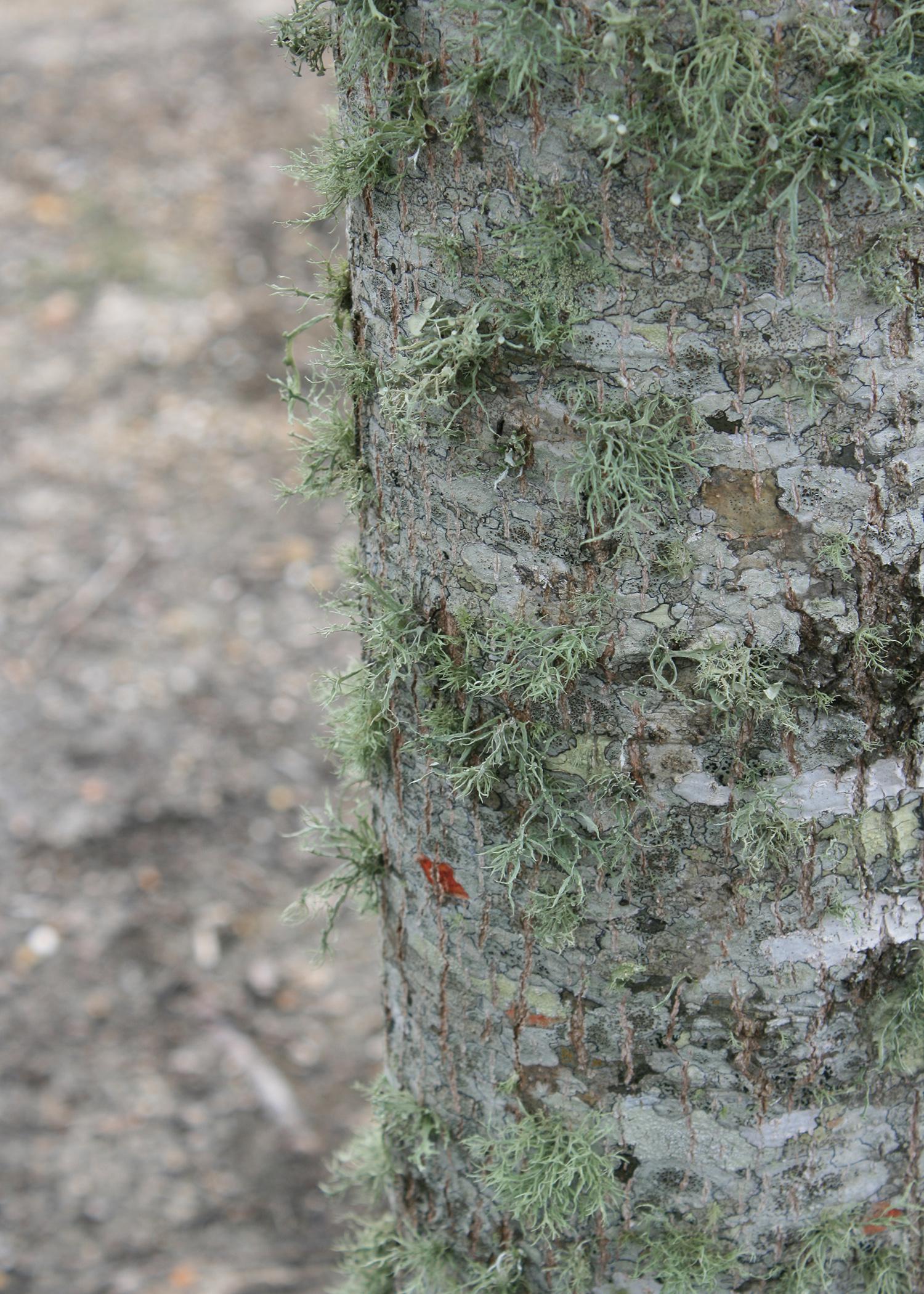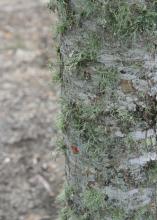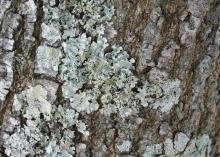Information Possibly Outdated
The information presented on this page was originally released on January 12, 2015. It may not be outdated, but please search our site for more current information. If you plan to quote or reference this information in a publication, please check with the Extension specialist or author before proceeding.
Winter reveals lichen growth on plants
Winter is a good time to examine landscape plants. With many of the deciduous plants dropping their leaves, it is easy to see defects and other problems, especially strange things growing on the landscape plants.
Extension offices all across Mississippi are going to be receiving calls from concerned homeowners about a moldy-looking, gray-green stuff on their plants. The cause for the concern 99 percent of the time is an organism called lichen.
Lichens are interesting organisms that are found throughout the world. They are composed of an unlikely combination of fungi and algae that survives in a symbiotic relationship. The algae supply the food through photosynthesis, and the fungi gather the water and other needed nutrients. In other words, the fungi and algae have taken a likin’ to each other. (Sorry.)
Lichens are commonly observed on trees and shrubs that are struggling and often get blamed for the plants’ decline. Most of the time, the lichens were already present before any decline started. Trees that are stressed may lose a few branches, allowing more sunlight into the canopy, and the lichen begins to grow more in the brighter light. So as the tree continues to decline, the lichen continues to grow, giving the illusion of causing the problem. The lichens are only using the plants for support and grow on the surface of the bark. In fact, lichen will grow on any hard surface outdoors -- from wooden fences to rocks.
There are three main types of lichens found in the landscape. Some are spreading and have a flattened appearance that may even look a little crusty. Another lichen spreads across branches and develops wavy folds that resemble a crumpled sheet. Some resemble highly branched balls of fuzzy stuff with projections going out in all directions. Despite the varied appearances, they are all lichens.
There are not any compounds to remove lichens, but there really isn’t any need to remove them. Lichens are naturally occurring organisms that are opportunistic to increase their growth as a tree canopy starts to decline. The best solution is keeping the landscape plants in optimum condition by following recommended watering, fertilization and other management practices. A healthy growing plant will have a canopy that will discourage lichen growth. Light pruning of damaged branches encourages new branch growth, which, in turn, helps establish a denser canopy.
Just as a piece of metal garden art will mature and gain an aged patina, I personally think that lichen adds that touch of patina to landscape plants.








